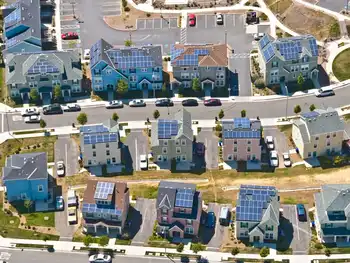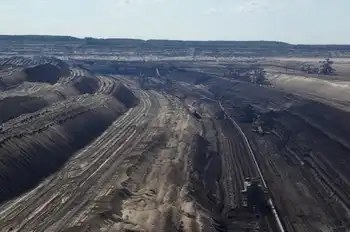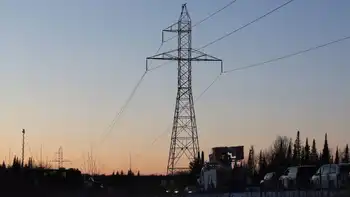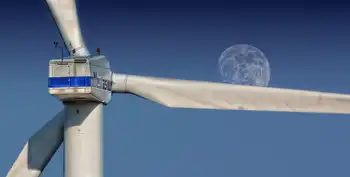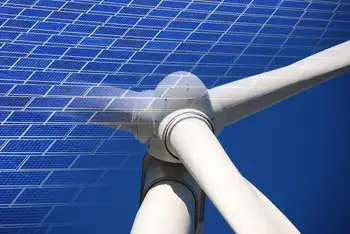Toyota holds back in EV race
By New York Times
NFPA 70e Training
Our customized live online or in‑person group training can be delivered to your staff at your location.

- Live Online
- 6 hours Instructor-led
- Group Training Available
Mitsubishi Motors started leasing its all-electric vehicle, the i-MiEV, in June. Next year, Nissan Motor is set to release its electric car, the Leaf. But Toyota does not plan to introduce an all-electric car until 2012. Instead, later this year, it plans to introduce a plug-in electric-gasoline hybrid, and only a few hundred initially.
“Why is Toyota waiting on electric cars?” asked Tadashi Tateuchi, a former race car designer turned electric-car evangelist.
Electric technology could help determine winners and losers in the auto industry of the future, but Toyota has been highly skeptical of electrical vehicles.
“The time is not here,” Masatami Takimoto, Toyota’s executive vice president, said during a factory tour this year.
Electric cars “face many challenges,” he said, adding that “to commercialize pure EV’s, we need a battery that far exceeds the current technology.”
If Toyota is right, its competitors will have spent billions on a technology that will be slow to take off.
But if electric cars win drivers over, ToyotaÂ’s rivals could take the lead.
“In a world where vehicles run on electrons rather than hydrocarbons, the automakers will have to reinvent their businesses,” Russell Hensley, an analyst at the consulting company McKinsey, told clients in a recent report.
But that world is not here yet. And Toyota, which started developing hybrids in the early 1990s, did not make a profit on the cars until 2001, said Takeshi Uchiyamada, the chief engineer of the first-generation Prius.
Toyota would like to profit all it can from the current technology before shifting to a new one, analysts say, especially because the company is facing a second down year after a loss last year of about $4.4 billion.
“At first, electric cars will all be small, making profit margins small also,” said Maho Inoue, an automobile analyst at the Daiwa Institute of Research, a research group in Tokyo.
Toyota executives rattle off reasons to be skeptical of electric cars: They do not travel far enough on a charge; their batteries are expensive and not reliable; the electrical infrastructure is not in place to recharge them.
Executives also say that ToyotaÂ’s reputation for reliability could be tarnished if the company forged ahead with an unproven technology.
It remains unclear how soon there will be a mass market for expensive cars with limited range, Toyota says.
Even when electric cars are sold widely, the company says, they will be suitable only for short trips and serve a decidedly niche market.
Toyota is instead building on its hybrid technology, bringing out a plug-in, gasoline-electric hybrid vehicle later this year that runs a short distance on batteries before the hybrid system kicks in.
But electric-car enthusiasts say Toyota is being unnecessarily cautious, ignoring technological breakthroughs that would allow it to develop electric cars more quickly. Advances in batteries, as well as in the strong magnets needed for drive motors, have made electric vehicles viable, automotive analysts say. Technology is also being developed that will drastically cut down charging times.
“There’s a potential for electric cars to be easier and cheaper to make than conventional cars, because their structure is simpler and they use fewer parts,” said Hiroshi Shimizu, a professor of environment and information studies at Keio University in Tokyo.
Moreover, he said, battery production technology is no more complicated than that of semiconductors, which are already mass-produced.
“Toyota could launch an electric car tomorrow if it wanted to,” Mr. Tateuchi, the former race car engineer, said. Regretting his gas-guzzling creations, he founded the Japan E.V. Club 15 years ago to urge automakers to produce zero-emission cars.
“Toyota tells people the age of electric cars is not yet here,” he said. “That’s not true.”
Meanwhile, conditions for a wider adoption of electric vehicles are falling into place.
Consumers appear more interested in buying eco-friendly cars. A string of studies has shown that most of the time, most people drive well within the range of current electric cars.
Governments around the globe are supporting the technology with subsidies and by setting ever more stringent emission standards. Infrastructure projects to build battery exchange and recharging stations are starting up.
And there is an environmental imperative: Though the newest Prius can travel 50 miles to the gallon, as a hybrid it still uses gasoline and emits carbon. Sherry Boschert of the San Francisco Electric Vehicle Association said a survey of 49 scientific studies found that electric vehicles released 24 percent to 65 percent less carbon than hybrids, when the electricity they used was taken into account.
“Whether you smoke a lot or you smoke a little, you’re still a smoker,” Nissan’s chief executive, Carlos Ghosn, said at the Leaf’s introduction, in a snub to Toyota’s hybrid technology.
Both Nissan and Mitsubishi have their own reasons for rushing out an all-electric car. Having invested little in hybrids, they hope to leapfrog straight to the next technology.
Nissan is introducing some hybrids that use ToyotaÂ’s technology, but Mr. Ghosn said he hoped the Leaf would be the worldÂ’s first mass-produced electric vehicle. The Leaf travels up to 90 miles an hour, goes 100 miles between recharges and carries a price tag of $25,000 to $33,000.
MitsubishiÂ’s i-MiEV was released in limited numbers in Japan this year.
The California-based start-up Tesla Motors has also been selling electric cars on a limited scale. In late 2010, General Motors plans to release the Volt, meant to travel nearly 40 miles on batteries before a small gasoline engine starts up to provide electricity.
Meanwhile, Toyota’s new president, Akio Toyoda, has become a big promoter of the company’s fuel cells, which he calls the “ultimate” technology. But fuel cell cars, which produce electricity from hydrogen, would take even longer than battery-electric vehicles to commercialize.
Some experts predict that the auto market will soon be divided among competing technologies. “Small electric cars will be used for short distances within cities, with hydrogen cells powering big buses,” the Development Bank of Japan forecast in 2008.
Others say that once automakers commit to mass production and drive costs down, electric cars could dominate the market. That could require Toyota to speed up its electric car plans, they say.
“You don’t see many competing technologies survive in a key market for very long,” said Mr. Shimizu, the Keio University professor.
And more often than not in the history of innovation, a change in the dominant technology means a change in the market leader.
“Electric cars are a disruptive technology, and Toyota knows that,” Mr. Shimizu said. “I wouldn’t say Toyota is killing the electric vehicle. Perhaps Toyota is scared.”





